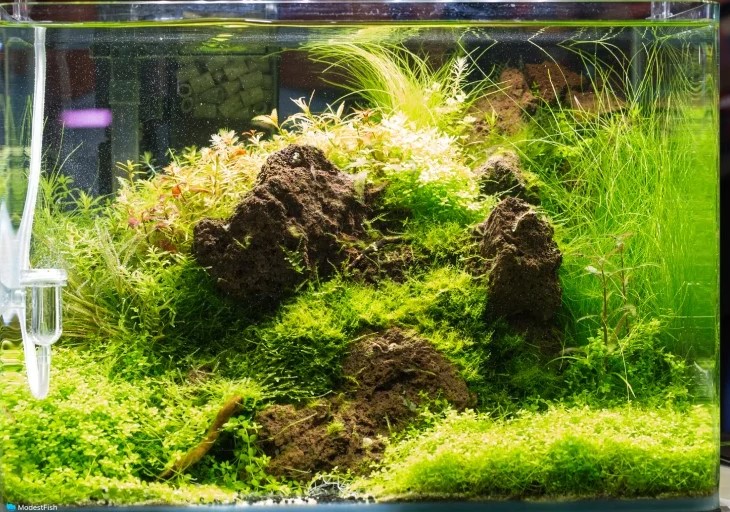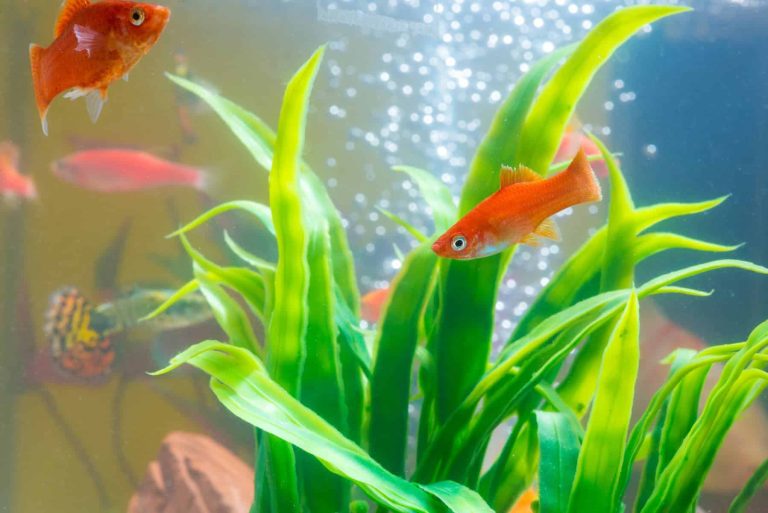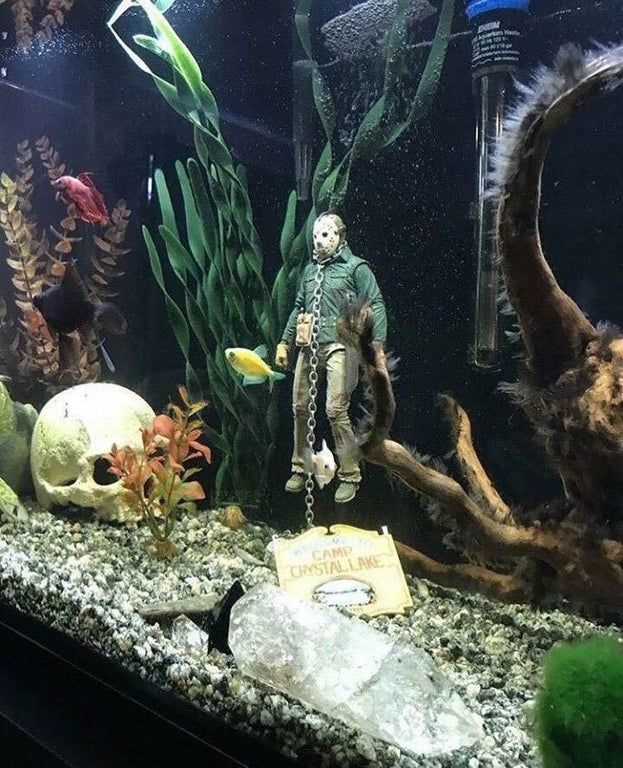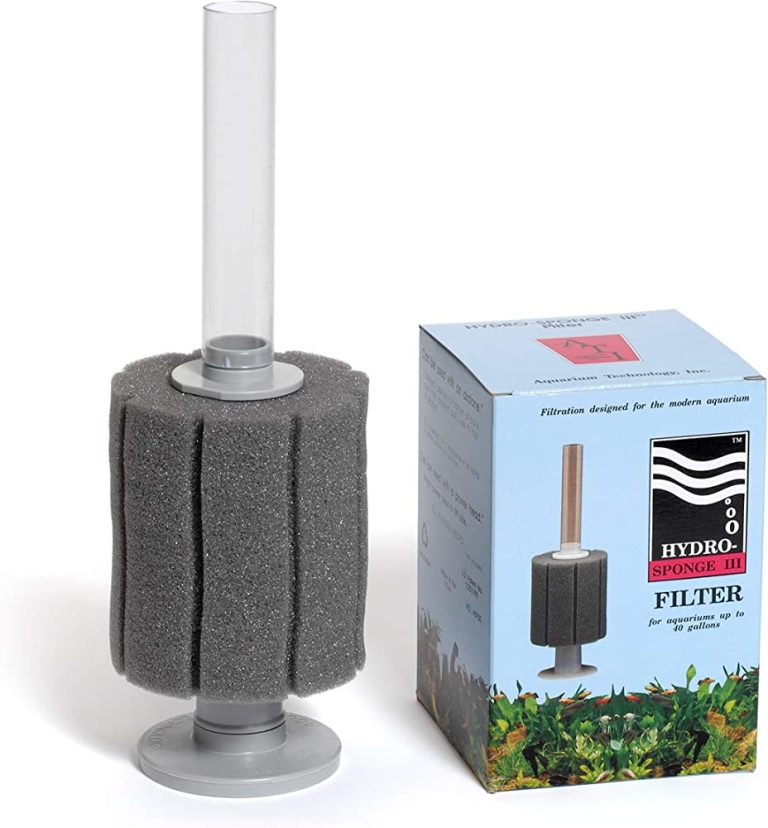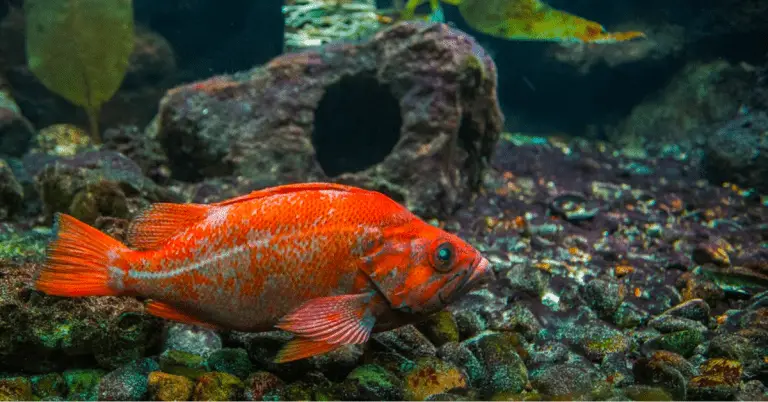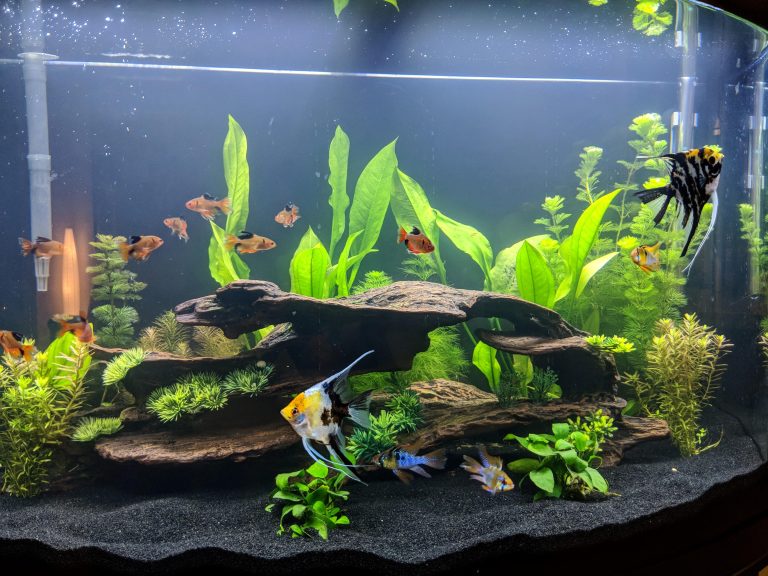Master the Art of Lowering Gh in Your Aquarium
To lower gh in aquarium, use ro/di water or add peat moss to the filter. Gh can also be lowered by increasing water changes or adding aquarium driftwood.
Aquarium enthusiasts commonly face the issue of controlling water hardness in their tanks. The general hardness (gh) of water which measures calcium and magnesium ions’ presence creates issues for fish and plants and influences the ph level of water. High gh levels can cause fish to become stressed, which leads to health issues.
As a result, it’s essential to maintain healthy gh levels in your aquarium. Luckily a variety of techniques can be employed to lower gh in the aquarium. It could be done by reducing the use of hard water during water changes, adding aquarium driftwood, or injecting carbon dioxide. In this article, we will discuss effective ways of reducing gh in an aquarium to maintain a healthy and suitable environment for aquatic life.
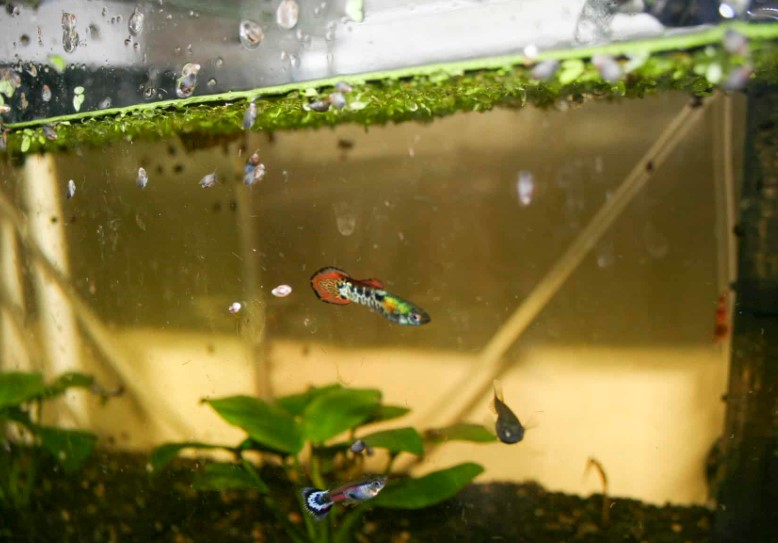
Understanding The Importance Of Gh Levels In Your Aquarium
Maintaining the water quality of your aquarium is essential for the health of your fish and other aquatic life. Gh levels play a critical role in your aquarium’s ecosystem. Gh is the measurement of carbonate and bicarbonate ions in the water.
If the gh levels are imbalanced, it can negatively impact your fish and plants’ health.
What Is Gh, And Why Is It Important In Aquatic Environments?
- Gh stands for general hardness, which measures the concentration of magnesium and calcium ions in the water.
- The gh levels play a significant role in maintaining the ph balance of the aquarium’s water.
- Gh also affects the breeding habits of fish in the aquarium.
How Do High Gh Levels Affect Fish And Plant Life In Your Aquarium?
A high gh level can adversely affect aquatic life in several ways.
- High gh levels can cause fish’s gills to become clogged, making it difficult for them to breathe.
- High gh levels can make it challenging for fish to absorb nutrients.
- Aquarium plants can also suffer from high gh levels, leading to stunted growth or even death.
- High gh levels can cause the water in the aquarium to become cloudy, making it difficult to see your fish.
The Negative Effects Of Low Gh Levels On Your Aquarium’S Ecosystem
Low gh levels can be equally harmful as high gh levels. Any fluctuation in the gh levels can lead to unstable ph levels, which can be challenging to correct.
- Low gh levels can cause stress to fish, leading to poor health and death.
- Aquarium plants can also suffer from low gh levels, leading to yellow or brown leaves.
- Low gh levels can cause the water to become acidic, which can make it difficult for fish to thrive.
Maintaining the gh levels in your aquarium is crucial for the health and well-being of your fish and aquatic plants. Monitoring the gh levels regularly can help prevent any imbalances and keep your aquarium’s ecosystem healthy and thriving.
Measuring And Monitoring Gh Levels In Your Aquarium
Maintaining healthy gh levels in your aquarium is crucial for the overall well-being of your aquatic pets and plants. It’s important to monitor gh levels regularly to keep them under control. In this section, we’ll discuss the equipment that you need to measure gh levels, how to collect samples, and analyze them for gh levels, and what the results mean for your aquarium.
The Equipment You Need To Measure Gh Levels In Your Aquarium
To measure gh levels, you will need a few essential pieces of equipment. Here are the things that you need:
- A gh test kit
- Clean glass vials to collect and store water samples
- A thermometer to measure water temperature
- Ph test strips to check the ph level of your aquarium water
How To Collect Samples And Analyze Your Water For Gh Levels
Collecting and analyzing samples of your aquarium water is an essential step in measuring gh levels. Here are the steps you should follow:
- Clean the glass vials thoroughly before collecting the water samples.
- Fill each vial with water from your aquarium. Make sure to store the samples in a cool and dark place.
- Use the gh test kit to measure the gh levels in each sample. Follow the instructions carefully to ensure accurate results.
- Check the water temperature of your aquarium and the ph levels using a thermometer and ph testing strips.
- Record the results of your gh test, water temperature, and ph levels in a journal or on a spreadsheet.
Understanding The Results And What They Mean For Your Aquarium
The results of your gh test will indicate the hardness of your aquarium water. Here’s what the results mean:
- If your gh level is below 4, the water is considered soft. This can be dangerous for some fish species, particularly those that require harder water.
- If your gh level is between 4 and 8, the water is considered moderately hard. This is suitable for most fish species and plants.
- If your gh level is above 8, the water is considered hard. This may not be suitable for some fish species, and you may need to adjust your gh levels accordingly.
Measuring and monitoring gh levels in your aquarium is essential for maintaining a healthy environment for your aquatic pets and plants. By following these steps, you’ll be able to keep your gh levels under control and ensure that your aquarium inhabitants thrive.
Techniques For Lowering Gh Levels In Your Aquarium
Implementing A Reverse Osmosis System For Your Aquarium Water
Reverse osmosis (ro) is a simple, yet effective technique to lower the gh levels in your aquarium water. Here are the key points to consider before implementing an ro system:
- Ro systems remove impurities, minerals, and dissolved solids from your aquarium water by forcing water through a semi-permeable membrane.
- Ro systems are typically installed as a unit underneath your sink and require a dedicated faucet. However, there are also portable ro systems that can be mounted on a wall or placed on a countertop.
- Ro systems also remove beneficial minerals, such as calcium and magnesium ions, so it’s important to add these minerals back into your aquarium water.
Diluting Your Aquarium Water With Distilled Or Softened Water
Diluting your aquarium water with distilled or softened water is a more cost-effective way to lower gh levels. Here are some key points to consider before diluting your aquarium water:
- Distilled water is free of minerals and impurities, while softened water still contains some minerals.
- Before using distilled or softened water, test the ph and other parameters of both your aquarium water and the added water to ensure they are compatible.
- Gradually add the diluted water to your aquarium over several days to prevent shocking your fish and other aquarium inhabitants.
Adding Natural Substances To Your Aquarium Water To Lower Gh Levels
There are several natural substances that you can add to your aquarium water to lower gh levels. Here are some key points to consider before adding natural substances:
- Peat moss, driftwood, and indian almond leaves are all natural substances that can help lower gh levels in your aquarium.
- These substances contain tannins that release organic acids, which help to lower gh levels. Be sure to use aquarium-safe versions of these substances.
- While natural methods may take longer to show results, they can provide a more sustainable, long-term solution for maintaining balance in your aquarium water.
Frequently Asked Questions For How To Lower Gh In Aquarium
How Does High Gh Affect Aquariums?
High gh levels can cause problems like hard water, fish stress, unhealthy plants, and even algae growth. In aquariums, high gh levels can impact water quality, leading to diseases and even death of aquatic life.
What Is The Ideal Gh Level For An Aquarium?
The ideal gh level in an aquarium typically ranges between 4-6 dgh (degrees of general hardness). However, this may vary depending on the specific type of fish and plants in your aquarium. Researching the specific requirements of your pets can help you determine the ideal levels.
How Can I Lower The Gh Level In My Aquarium?
You can lower gh levels in your aquarium by adding distilled water to your tank, using reverse osmosis filtration systems, and diluting your hard water with soft water. Another option is to use products, such as peat moss or chemical additives, that can help regulate the gh levels.
Can I Lower Gh Levels In My Aquarium Without Changing The Water?
Yes, you can lower gh levels in your aquarium without changing the water by using chemical additives such as gh lowering powders. However, it is always best to perform a partial water change to dilute and flush out any excess minerals in the water.
Is It Safe To Lower Gh Levels In My Aquarium?
Lowering gh levels is safe as long as it is done properly and gradually. Drastic changes in water chemistry can be harmful to your aquatic life. It is recommended to gradually lower the gh levels over a few days or weeks, monitoring the water parameters throughout the process.
Conclusion
As a responsible aquarium enthusiast, it is crucial to maintain a healthy water environment for your aquatic pets. One of the essential elements to keep in check is gh levels in your aquarium. Remember that high gh levels can cause harm and stress to your fish, leading to their untimely death.
However, you don’t have to worry because we have provided the necessary steps on how to lower gh in your aquarium effectively. From adding organic acid to planting live plants, you have various options to choose from, depending on the underlying causes of your gh levels.
Regularly testing the gh levels and making the necessary adjustments can significantly improve your aquarium’s overall health and longevity and your pets’ well-being. So don’t wait until it’s too late – follow these guidelines and enjoy your aquarium for many years to come!
